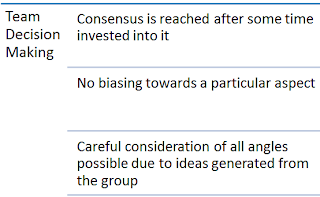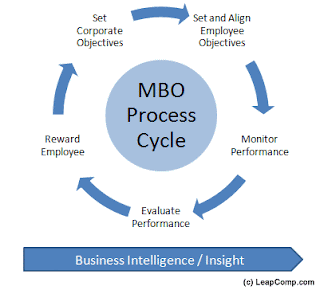Please refer to my previous posts on goal setting and sky walk:
Here are the links :
http://138prasanthmantriim20pomcourse.blogspot.in/
http://138prasanthmantriim20nitiepomcourse.blogspot.in/
Decision Making & Problem Solving
These principles were discussed by Prof.T.Prasad taking examples from previously discussed topics on three monks and tower building exercises. The changing dynamics of team decisions making and problem solving to the individual level application can be illustrated for both.
Let me first elaborate on the basic concepts of decision making and problem solving :
Decision Making
It is the process of analyzing various options available and weighing them to choose the best option that is most beneficial to a group or individual or situation.
Decision making can be of two types :
1)Individual decision making
2)Team decision making
Individual Decision Making :
The steps for problem identification are as follows :
Here are the links :
http://138prasanthmantriim20pomcourse.blogspot.in/
http://138prasanthmantriim20nitiepomcourse.blogspot.in/
Decision Making & Problem Solving
These principles were discussed by Prof.T.Prasad taking examples from previously discussed topics on three monks and tower building exercises. The changing dynamics of team decisions making and problem solving to the individual level application can be illustrated for both.
Let me first elaborate on the basic concepts of decision making and problem solving :
Decision Making
It is the process of analyzing various options available and weighing them to choose the best option that is most beneficial to a group or individual or situation.
Decision making can be of two types :
1)Individual decision making
2)Team decision making
Individual Decision Making :
The tower building exercise demonstrated individual decision making in the beginning when the traditional approach of management was being practiced. Similarly, in the case of 3 monks, the 1st monk was exercising individual decision making when working alone.
Team Decision Making :
Decision Making and its implementation is adopted differently in various organisations based on its structure.The matrix below shows how team vs individual decision making & implementation is carried out
Problem Solving :
Where there is a problem, there is an opportunity. In simple terms there is a scope for improvement in that respective area. There are different philosophies adopted in problem solving that are ingrained in organisations principles. Some examples are TQM , TPM, Kaizen philosophies that revolve around abnormality identification and its elimination.
- Prioritizing a problem - A lot of problems persist in an organisations functioning and processes all of which cannot be tackled at the same time. Prioritizing them in order maximize the desired result is to be done.
- Analysis - After the problem is selected, various methods are employed to find the reasons of problem persistence or occurrence.
- Improve - Through brainstorming and suggestions, possible remedies are looked at to eliminate the problem
- Implementation - The remedial actions are carried out and is seen to it that the problem does not occur once again.



























